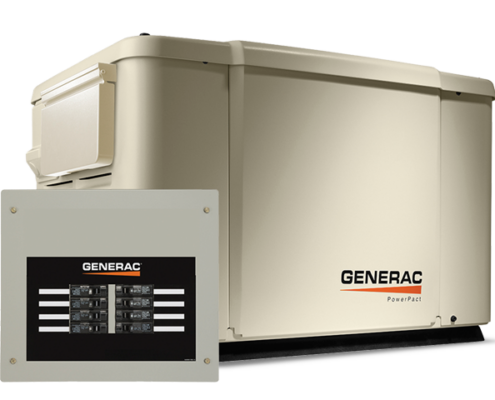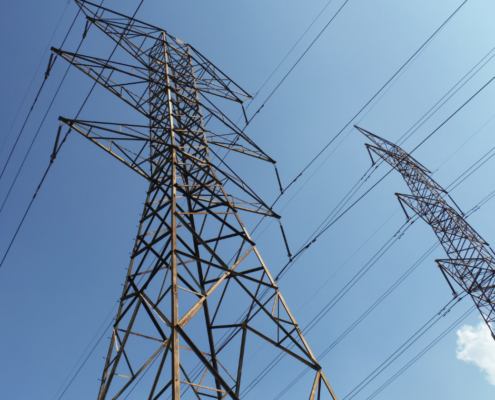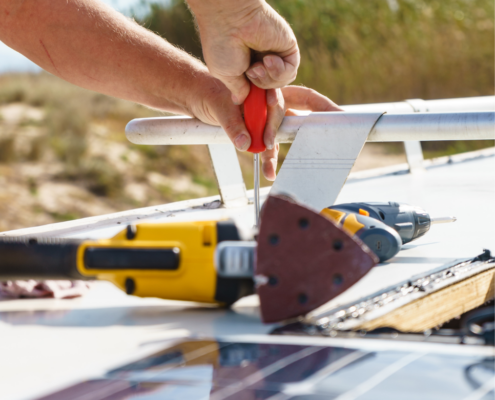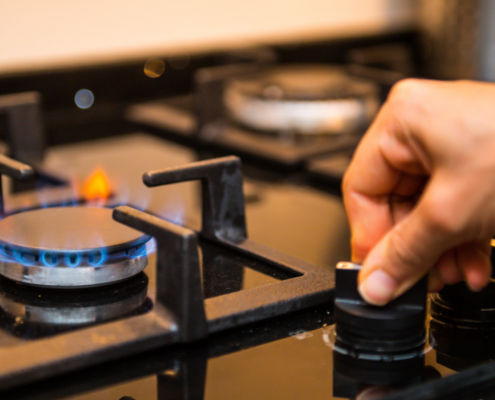Last Updated on July 27, 2022 by Mary Pressler
How Can I Prepare My Home for a Power Failure?
Blackouts can affect any power system, disrupting homes and businesses. Adequate maintenance and planning minimize the risk of a power failure, but achieving 100% reliability is not possible. Also consider that blackouts are more likely during emergencies such as extreme weather.
There are many options to equip your home for blackouts, ranging from simple devices such as flashlights, to more complex systems such as solar-powered home batteries. This article provides several recommendations to make your home more resilient during a blackout.
Lighting Options for Electric Service Interruptions
A reliable light source is one of the main priorities in blackouts, for the simple reason that any activity needs visibility. Also consider that moving around in the dark is more dangerous during emergencies; if you are injured, access to transportation and medical assistance may be limited.
Candles and kerosene lamps are the traditional solution during blackouts, but they have one significant problem: combustion releases substances that are harmful for humans.
- These substances can easily accumulate indoors, especially during a blackout, when ventilation systems have no power.
- Carbon monoxide is especially dangerous – a concentration of just 1% causes loss of consciousness within minutes, and possibly death.
With the risks of indoor combustion during a blackout, the recommendation is using electrically-powered light sources. There are three main options: flashlights, emergency lights, and lighting fixtures with battery backup.
- Flashlights have the advantage of being handheld, which means you can point the light beam anywhere. You can get a longer battery life with LED flashlights, and you can avoid battery purchases completely with a rechargeable crank-powered flashlight.
- Emergency lights have a switch that keeps them OFF when the power supply is available. These lights are equipped with batteries, and they activate immediately during a blackout. Just like with flashlights, their batteries last longer when LED bulbs are used.
- Many lighting fixtures have the option of adding a backup battery, which allows them to operate as emergency lights during a blackout. The same principle applies – LED fixtures can stay on for longer.
Flashlights are the most affordable option, but LED lighting saves electricity all the time. If you use LED fixtures with backup batteries, they lower your power bills under normal conditions, while being a reliable lighting system during blackouts.
Keeping Your Home Temperature Comfortable During Blackouts
In addition to leaving your home in the dark, a power failure disables space heating and air conditioning. This is a serious issue if the emergency occurs in a very hot or cold day, since indoor temperatures become unbearable very quickly. This effect is minimized in a well-insulated home, which comes with the added benefit of reducing your heating and cooling costs under normal conditions.
To complement insulation, get your home inspected for air leaks. These also cause unwanted heat gain during summer and heat loss during winter, reducing the effectiveness of insulation. On a cold winter day, a home with many air leaks cools fast even with insulated walls.
Ensuring a Water and Food Supply During Power Outages
Blackouts often come with water supply interruptions, since pumping systems depend on electricity – this is especially true if you live in a building that uses a water booster pump. A simple solution is keeping enough drinking water at all times, plus a water tank for all other uses.
Considering that refrigerators are also disabled during a blackout, a good recommendation is keeping a stock of durable foods that need no refrigeration. Canned products, cereals and protein bars are all good options. Avoid opening your refrigerator and freezer as much as possible during a blackout, since a lot of heat enters each time you open the door.
Generating Your Own Electricity During a Blackout
Assuming the budget is available, generating your own electricity is also an option during blackouts. Diesel generators are the most common option, but they require frequent deliveries of diesel to stay operational for an extended period. There are two alternatives that can operate indefinitely: natural gas generators, and solar photovoltaic systems equipped with batteries.
- Natural gas generators are reliable because they use your gas connection instead of depending on diesel deliveries. Natural gas distribution systems are more resilient than power lines, and they are protected because most of the infrastructure is buried. As a result, the gas supply remains available during many emergencies that knock out the power grid.
- Solar PV systems with batteries give you an electricity supply that is replenished each day, unless the sun is blocked by cloudy weather. This option provides a power supply that does not depend on external services, as long as you limit daily consumption according to the generation and storage capacity of the installation.
Having an energy generation system is the most effective way to make your home resilient against blackouts, but the initial investment can be significant. However, even if a power source is available, all other measures are still recommended to improve your home resilience.
How Reliable Are Power Grids in the United States?
The Institute of Electrical and Electronics Engineers (IEEE) uses three main metrics to describe the reliability of power grids:
- System Average Interruption Duration Index (SAIDI), the average duration of power outages for electricity consumers.
- System Average Interruption Frequency Index (SAIFI), the average number of power outages per customer.
- Customer Average Interruption Duration Index (CAIDI), the average minutes per interruption.
In simple terms, the SAIDI is the combined duration of all outages, the SAIFI is the number of outages per consumer, and the CAIDI is the duration of each outage (all are average values).
The SAIDI, SAIFI and CAIDI are calculated with and without major events that affect the power grid, such as hurricanes. The latest data from the US Energy Information Administration is for 2020, and the following table provides the results for the entire country and for Texas:
| Region | All of USA | Texas Only |
| SAIDI with Major Events | 456.1 minutes | 419.4 minutes |
| SAIDI without Major Events | 116 minutes | 132.7 minutes |
| SAIFI with Major Events | 1.385 outages per user | 1.636 outages per user |
| SAIFI without Major Events | 1.013 outages per user | 1.223 outages per user |
| CAIDI with Major Events | 329.3 minutes per outage | 256.3 minutes per outage |
| CAIDI without Major Events | 114.5 minutes per outage | 108.5 minutes per outage |
The year 2020 brought many technical challenges for grid operators in the US. The country was struck by 14 hurricanes, combined with the impact of the COVID-19 pandemic.
The US EIA also provides reliability metrics for each utility company, including investor-owned utilities and municipal power companies. The following table compares the performance of the five transmission and distribution utilities (TDU) in the Texas deregulated market (considering the impact of major events)::
| TDU | SAIDI | SAIFI | CAIDI |
| Oncor | 487.69 minutes | 3.62 outages/customer | 134.72 min/outage |
| CenterPoint Energy | 226.43 minutes | 1.78 outages/customer | 127.49 min/outage |
| AEP Texas Central | 515.60 minutes | 1.88 outages/customer | 273.96 min/outage |
| AEP Texas North | 280.10 minutes | 1.67 outages/customer | 167.32 min/outage |
| TNMP | 110.23 minutes | 1.06 outages/customer | 103.99 min/outage |
Note how performance varies by utility company. TNMP had the lowest outage duration and also the lowest number of outages per customer. AEP Texas Central had the highest outage duration, while Oncor had the highest number of outages per customer.











Leave a Reply
Want to join the discussion?Feel free to contribute!